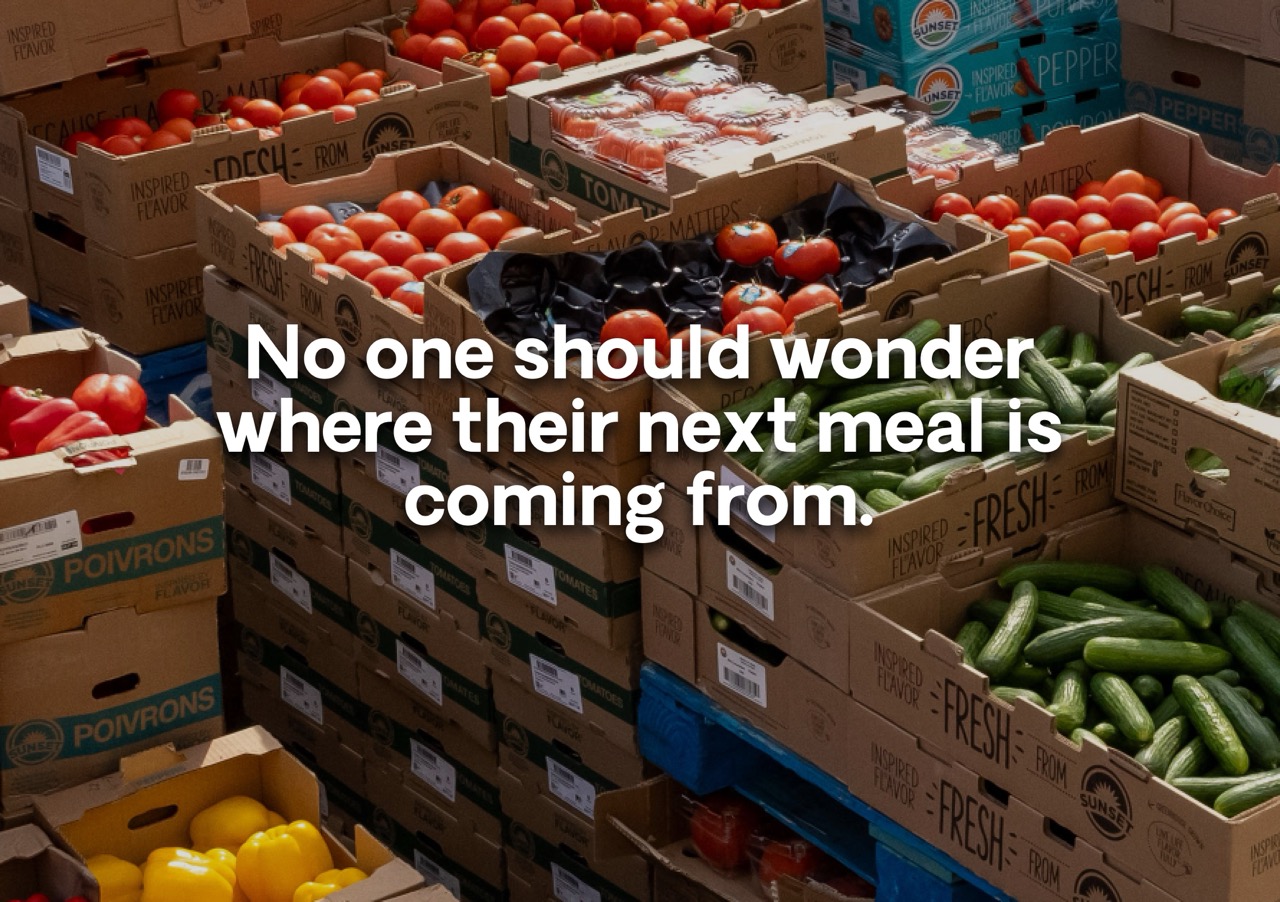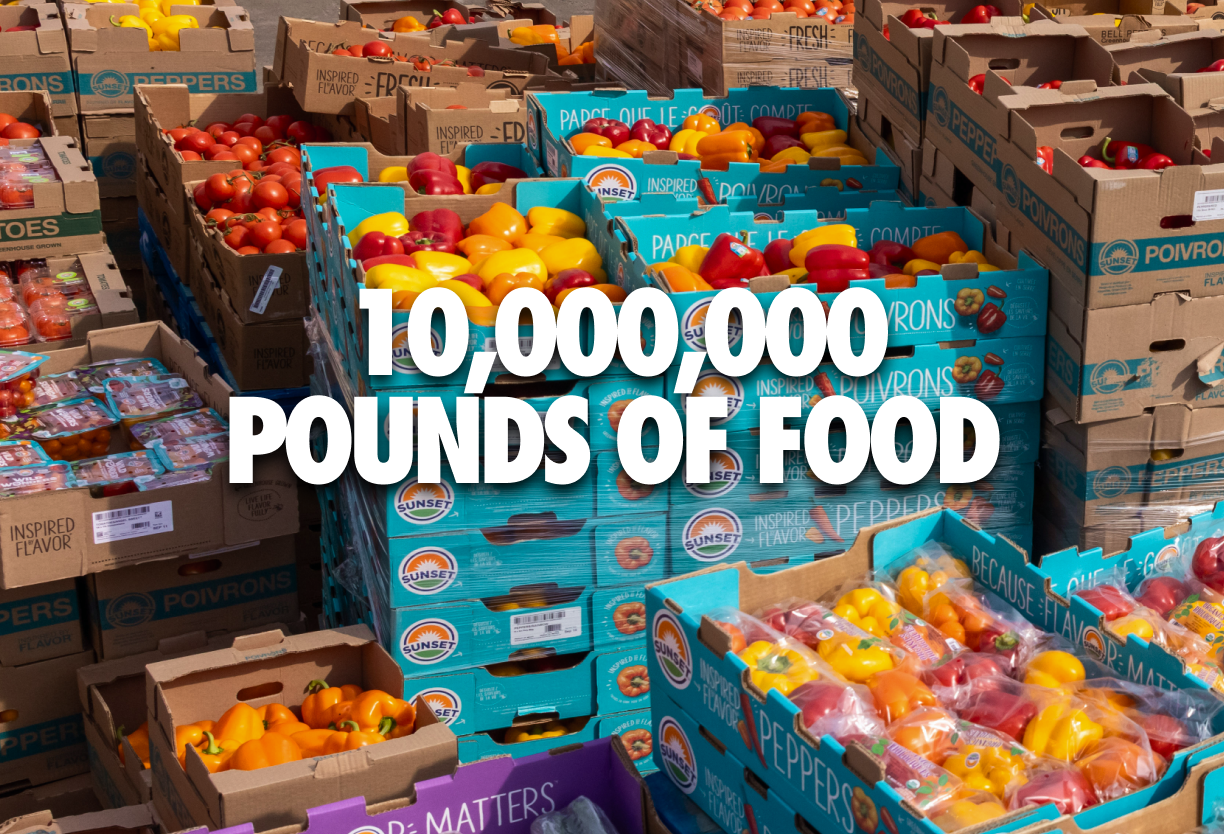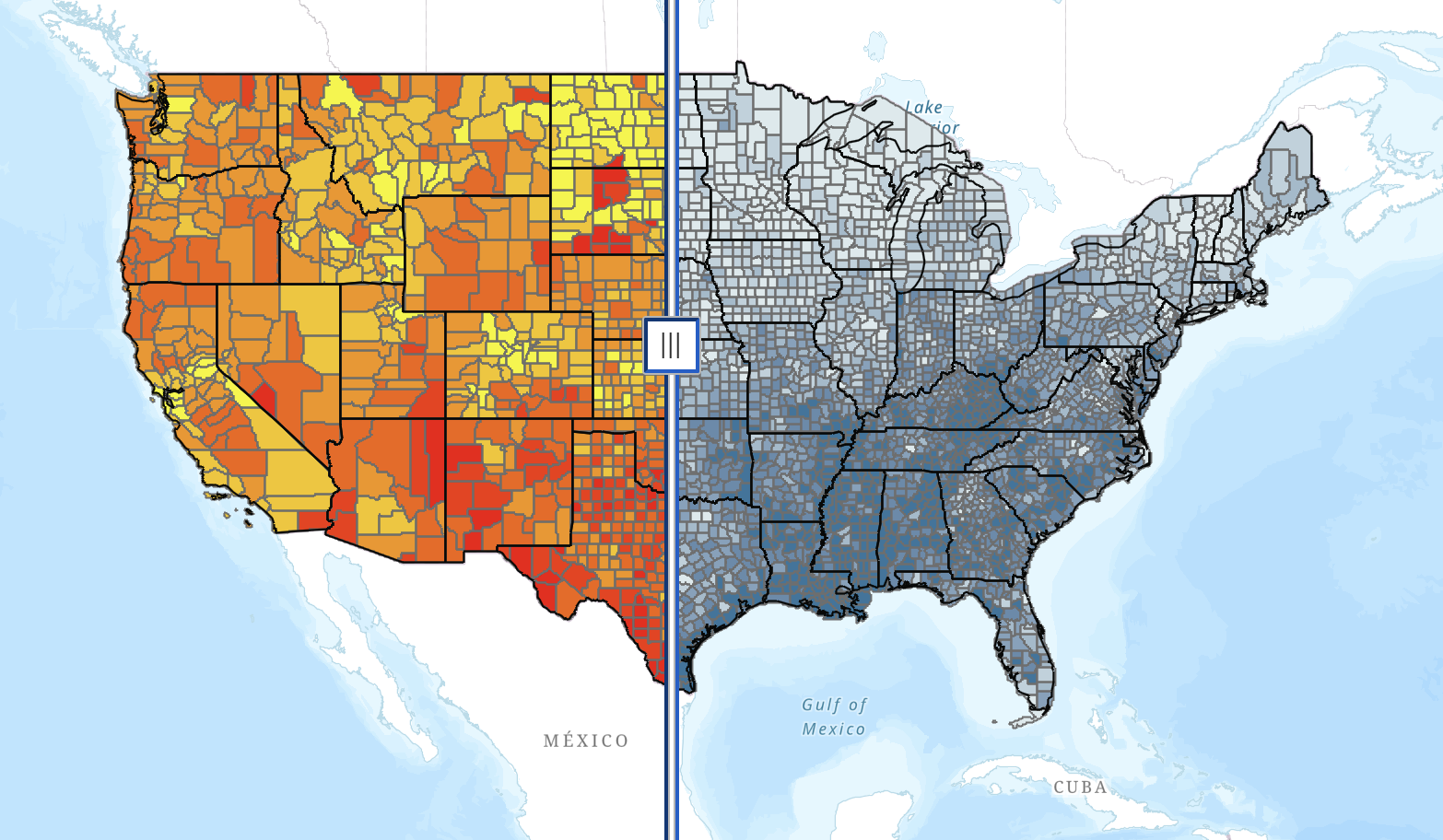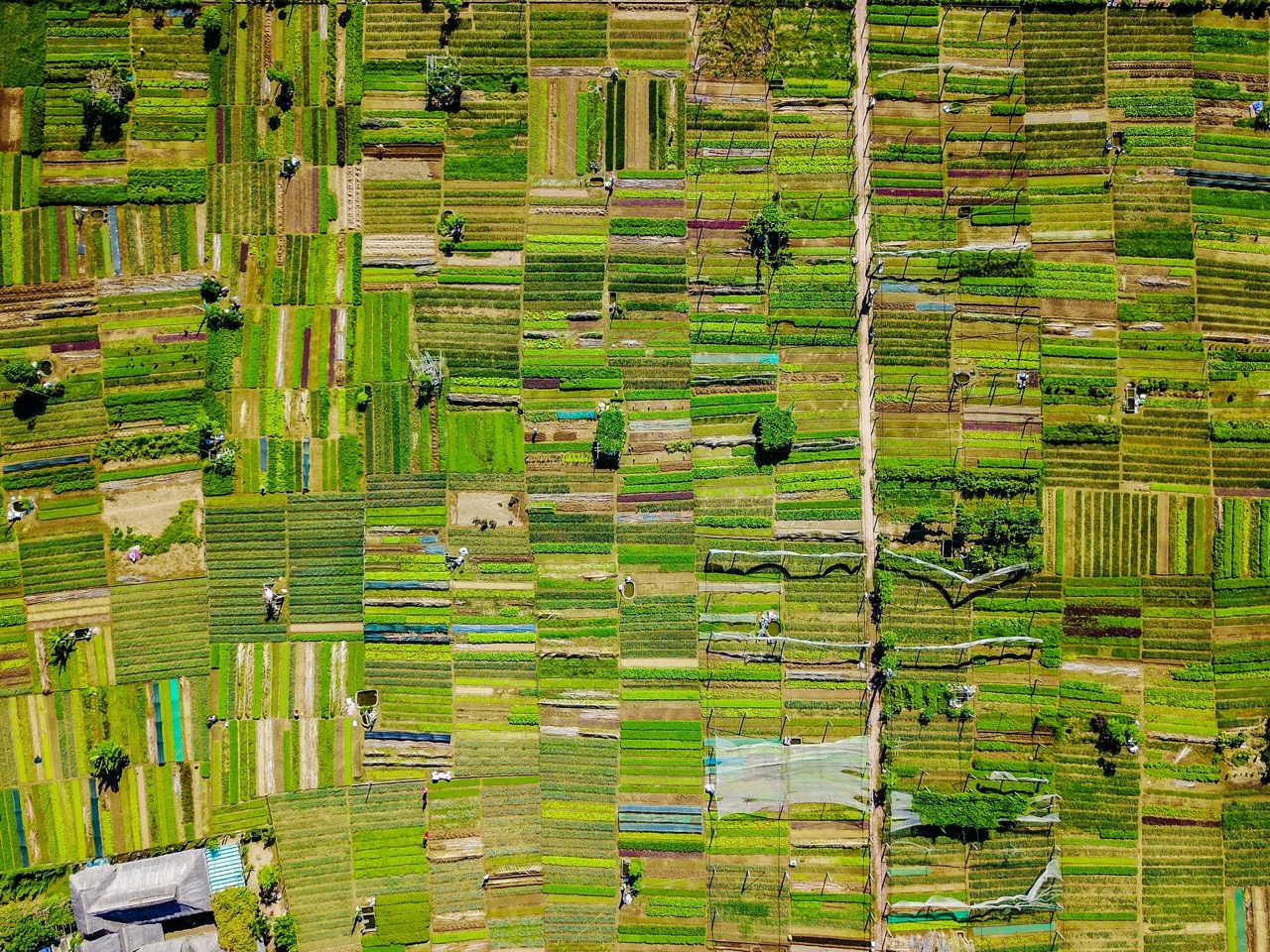In normal times, Edwina Valdo, a tribal member and program coordinator at the Pueblo of Acoma, can be found working in the health and human services division of the pueblo and managing grants. Since the onset of the COVID-19 pandemic, however, she has taken on the role of food pantry supervisor. The pantry was established to meet the needs of the Pueblo of Acoma after travel outside tribal land boundaries was restricted to contain the coronavirus. The food pantry serves approximately 375-400 families weekly.
The Pueblo of Acoma is the longest continuously inhabited pueblo and houses approximately 700 families. “Our population is from infants to elders,” Edwina said of her community. “[Pueblo] culture is transmitted orally through stories the elders share with the younger generation, so we try or best to safeguard our elders and provide for them and make sure they’re taken care of.”
Edwina herself grew up in the Pueblo of Acoma and earned her bachelor’s degree in community health before returning to work in the Pueblo of Acoma’s tribal administration. She has been working there for three years.
The Pueblo of Acoma’s main revenue comes from the tribal-operated casino, with 250 employees from the tribe as well as its neighboring cities of Albuquerque and Grant, New Mexico. There is a K-8 school on the reservation, and high schools on a neighboring reservation and in Grant. While the majority of those who grow up on the reservation stay, some leave to pursue employment in neighboring cities and across the country.

The biggest challenge Edwina and her team have faced has been storing large quantities of food for distribution. Since the onset of the pandemic and the opening of the community food bank, the Pueblo of Acoma has purchased multiple industrial-sized refrigerators and freezers. However, the July 31st-donation of 43,000 pounds of fingerling potatoes from Mountain Valley Produce in Colorado to the Pueblo of Acoma will be delivered to tribal members in the neighboring cities of Albuquerque and Grant, New Mexico. “It’s a large donation and we don’t want any of it to go to waste,” Edwina said.
“The highlight for me is that we continue to have more families sign up [for the food bank] each week - our numbers haven’t plateaued and we keep growing, and we’re always looking for other resources to bring more food so that we can ensure we’re serving all that do apply,” she said.
< Back
In normal times, Edwina Valdo, a tribal member and program coordinator at the Pueblo of Acoma, can be found working in the health and human services division of the pueblo and managing grants. Since the onset of the COVID-19 pandemic, however, she has taken on the role of food pantry supervisor. The pantry was established to meet the needs of the Pueblo of Acoma after travel outside tribal land boundaries was restricted to contain the coronavirus. The food pantry serves approximately 375-400 families weekly.
The Pueblo of Acoma is the longest continuously inhabited pueblo and houses approximately 700 families. “Our population is from infants to elders,” Edwina said of her community. “[Pueblo] culture is transmitted orally through stories the elders share with the younger generation, so we try or best to safeguard our elders and provide for them and make sure they’re taken care of.”
Edwina herself grew up in the Pueblo of Acoma and earned her bachelor’s degree in community health before returning to work in the Pueblo of Acoma’s tribal administration. She has been working there for three years.
The Pueblo of Acoma’s main revenue comes from the tribal-operated casino, with 250 employees from the tribe as well as its neighboring cities of Albuquerque and Grant, New Mexico. There is a K-8 school on the reservation, and high schools on a neighboring reservation and in Grant. While the majority of those who grow up on the reservation stay, some leave to pursue employment in neighboring cities and across the country.

The biggest challenge Edwina and her team have faced has been storing large quantities of food for distribution. Since the onset of the pandemic and the opening of the community food bank, the Pueblo of Acoma has purchased multiple industrial-sized refrigerators and freezers. However, the July 31st-donation of 43,000 pounds of fingerling potatoes from Mountain Valley Produce in Colorado to the Pueblo of Acoma will be delivered to tribal members in the neighboring cities of Albuquerque and Grant, New Mexico. “It’s a large donation and we don’t want any of it to go to waste,” Edwina said.
“The highlight for me is that we continue to have more families sign up [for the food bank] each week - our numbers haven’t plateaued and we keep growing, and we’re always looking for other resources to bring more food so that we can ensure we’re serving all that do apply,” she said.
Edwina Valdo
Pueblo of Acoma
In normal times, Edwina Valdo, a tribal member and program coordinator at the Pueblo of Acoma, can be found working in the health and human services division of the pueblo and managing grants. Since the onset of the COVID-19 pandemic, however, she has taken on the role of food pantry supervisor. The pantry was established to meet the needs of the Pueblo of Acoma after travel outside tribal land boundaries was restricted to contain the coronavirus. The food pantry serves approximately 375-400 families weekly.
The Pueblo of Acoma is the longest continuously inhabited pueblo and houses approximately 700 families. “Our population is from infants to elders,” Edwina said of her community. “[Pueblo] culture is transmitted orally through stories the elders share with the younger generation, so we try or best to safeguard our elders and provide for them and make sure they’re taken care of.”
Edwina herself grew up in the Pueblo of Acoma and earned her bachelor’s degree in community health before returning to work in the Pueblo of Acoma’s tribal administration. She has been working there for three years.
The Pueblo of Acoma’s main revenue comes from the tribal-operated casino, with 250 employees from the tribe as well as its neighboring cities of Albuquerque and Grant, New Mexico. There is a K-8 school on the reservation, and high schools on a neighboring reservation and in Grant. While the majority of those who grow up on the reservation stay, some leave to pursue employment in neighboring cities and across the country.

The biggest challenge Edwina and her team have faced has been storing large quantities of food for distribution. Since the onset of the pandemic and the opening of the community food bank, the Pueblo of Acoma has purchased multiple industrial-sized refrigerators and freezers. However, the July 31st-donation of 43,000 pounds of fingerling potatoes from Mountain Valley Produce in Colorado to the Pueblo of Acoma will be delivered to tribal members in the neighboring cities of Albuquerque and Grant, New Mexico. “It’s a large donation and we don’t want any of it to go to waste,” Edwina said.
“The highlight for me is that we continue to have more families sign up [for the food bank] each week - our numbers haven’t plateaued and we keep growing, and we’re always looking for other resources to bring more food so that we can ensure we’re serving all that do apply,” she said.
.png)







.svg)
.svg)
.svg)